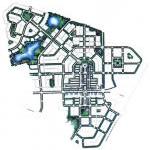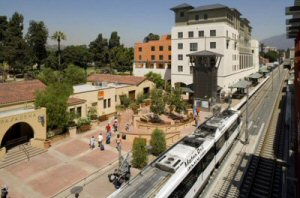The page you requested has moved and you've automatically been taken to its new location.
Please update your link or bookmark after closing this notice.

The role of transportation professionals is evolving and more frequently requires them to understand how transportation investments can be consistent with the principles and practices of land use planning and development. At a minimum, the coordination of land use and transportation requires that those concerned with the well-being of a community (or region, state or nation) assess and evaluate how land use decisions effect the transportation system and can increase viable options for people to access opportunities, goods, services, and other resources to improve the quality of their lives. In turn, the transportation sector should be aware of the effects the existing and future transportation systems may have on land use development demand, choices, and patterns.
Coordinating (or integrating) land use and transportation planning and development is commonly considered today as one facet of "smart growth", sustainable development, new urbanism, or other similar concept. These share policies, principles, and strategies intended to preserve and even enhance valued natural and cultural resources and facilitate "healthy", sustainable communities and neighborhoods. These approaches also tend to foster a balance of mixed uses (including housing, educational, employment, recreational, retail, and service opportunities) which recognize the importance of spatial or geographic proximity, lay out, and design of those uses. In addition, the consideration of long term and broader (even global) impacts of land use decisions on our natural and human-made environment, including transportation systems and facilities, is critical to these concepts, as well.

In addition to new approaches to how we maintain and enhance the livability of our communities referred to above, one of the eight planning factors listed in 23 USC 134(h)(1) and 23 USC 134(d)(1)(federal transportation planning law for States and metropolitan areas) requires consideration of strategies that will:
(E) protect and enhance the environment, promote energy conservation, improve the quality of life, and promote consistency between transportation improvements and State and local planned growth and economic development
While State Departments of Transportations, metropolitan planning organizations (MPOs), local agencies, and others involved in the transportation planning process have flexibility in meeting that factor, its implementation does require communication and interaction between transportation agencies and those involved with developing and implementing plans for growth, economic development, and similar issues and concerns impacting land use. Most likely, that effort will involve the comparison of transportation plans to other plans and, to some degree, coordinated crafting of local and regional land use/economic development strategies, policies, and plans with pertinent transportation studies, plans, and programs.
This FHWA website offers many, and we hope, useful resources, website links, and other information, including FHWA/US DOT program information, tools and techniques, and examples and case studies, which address the growing demand for delineating the interrelationships between land use and transportation. The information here will help transportation and land use professionals, elected officials, stakeholders, and the public to more successfully coordinate land use and transportation.
To see how FHWA programs can assist states, local governments, and others in addressing smart growth and related issues, please explore the information provided below and also visit: FHWA Environmental Programs Support State and Local Smart Growth Policies.